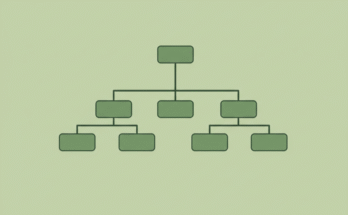As blockchain technology continues to evolve, scalability remains a critical challenge for many networks, particularly those operating on Ethereum. With the growing adoption of decentralized applications (dApps) and the increasing number of transactions, the need for efficient scaling solutions has become more apparent than ever. Among the most promising solutions are rollups, a layer 2 scaling technology designed to enhance transaction throughput while maintaining security and decentralization. In this post, we’ll break down what rollups are, explore the two main types, Optimistic Rollups and Zero-Knowledge (ZK) Rollups and highlight their key differences.
![Introduction to Rollups [Optimistic vs ZK Explained]](https://mineatech.com/wp-content/uploads/2025/06/introduction-to-rollups-optimistic-vs-zk-explained-1024x640.png)
What Are Rollups?
Rollups are a layer 2 solution that processes transactions off the main blockchain (layer 1) while still leveraging the security of the underlying network. By bundling or “rolling up” multiple transactions into a single batch and submitting it to the main chain, rollups significantly reduce the computational and storage demands on layer 1. This allows for faster and cheaper transactions without compromising the core principles of blockchain technology. Rollups rely on smart contracts deployed on layer 1 to verify and execute transactions. The primary distinction between rollup types lies in how they validate these transactions and ensure their accuracy.
Optimistic Rollups [How They Work]
Optimistic Rollups operate under the assumption that all transactions submitted off-chain are valid unless proven otherwise. This “optimistic” approach eliminates the need for extensive computation upfront, making transaction processing faster and more efficient.
→ Key Features of Optimistic Rollups:
- Fraud Proofs: To ensure security, Optimistic Rollups include a mechanism for challenging potentially invalid transactions. Validators can submit fraud proofs if they detect discrepancies in a batch of transactions. If a fraud proof is verified, the invalid transaction is rolled back, and penalties are applied to malicious actors.
- Compatibility with Ethereum Virtual Machine (EVM): Optimistic Rollups are highly compatible with existing Ethereum smart contracts, making it easier for developers to migrate their dApps without significant modifications.
- Latency: Due to the fraud-proof mechanism, transactions on Optimistic Rollups may experience delays during the challenge period (typically one week). This ensures that validators have sufficient time to dispute any fraudulent activity.
Popular examples of Optimistic Rollup solutions include Optimism and Arbitrum, both of which are gaining traction for their ability to reduce gas fees and improve transaction speeds while maintaining Ethereum’s security guarantees.
Zero-Knowledge (ZK) Rollups [How They Work]
Zero-Knowledge Rollups take a different approach by using advanced cryptographic proofs, specifically zero-knowledge proofs, to validate transactions. In this model, every batch of transactions is accompanied by a succinct proof (called a validity proof) that certifies its correctness. This proof is submitted to the layer 1 blockchain, eliminating the need for a challenge period.
→ Key Features of ZK Rollups:
- Validity Proofs: Unlike Optimistic Rollups, ZK Rollups do not assume transactions are valid by default. Instead, they prove the validity of every transaction upfront using zero-knowledge proofs. This ensures that only valid transactions are included on layer 1.
- Instant Finality: Since validity proofs are submitted along with transaction batches, there is no need for a waiting period. Transactions achieve finality as soon as they are processed on layer 1.
- Higher Computational Requirements: Generating zero-knowledge proofs is computationally intensive, which can pose challenges in terms of scalability and implementation complexity.
- Limited EVM Compatibility: ZK Rollups are not natively compatible with Ethereum’s existing smart contracts, requiring additional development work or specialized tools to support dApps.
Prominent ZK Rollup projects include zkSync, StarkNet, and Polygon zkEVM, all of which aim to offer high throughput and low fees while leveraging Ethereum’s security model.
Comparing Optimistic Rollups and ZK Rollups
→ Here’s a side-by-side comparison of the two rollup types:
| Feature | Optimistic Rollups | ZK Rollups |
|---|---|---|
| Validation Method | Fraud proofs | Validity proofs |
| Finality Time | Delayed (challenge period) | Instant |
| EVM Compatibility | High | Limited |
| Scalability | Moderate | High |
| Computational Efficiency | Lower | Higher |
| Security Model | Assumes validity until challenged | Proves validity upfront |
Choosing the Right Rollup Solution
→ The choice between Optimistic Rollups and ZK Rollups depends on specific use cases and priorities:
- For dApps requiring EVM compatibility: Optimistic Rollups may be more suitable due to their seamless integration with existing Ethereum smart contracts.
- For applications prioritizing instant finality and high scalability: ZK Rollups offer significant advantages in terms of speed and efficiency.
- For ecosystems with high computational demands: The advanced cryptography of ZK Rollups might present challenges but also delivers robust security guarantees.
The Future of Rollups
Both Optimistic and ZK Rollups represent critical advancements in blockchain scalability, but their adoption is still in its early stages. As technology matures, we can expect innovations that address current limitations, such as reducing the computational complexity of ZK proofs or shortening the challenge periods for Optimistic Rollups.
Ethereum’s roadmap also emphasizes rollup-centric scaling, with initiatives like proto-danksharding (EIP-4844) aiming to further enhance rollup efficiency by reducing data availability costs on layer 1. These developments signal a strong commitment to making Ethereum more scalable without compromising decentralization or security.
Conclusion
Rollups are a cornerstone of Ethereum’s scaling strategy, offering solutions that balance efficiency, security, and decentralization. While both Optimistic and ZK Rollups come with unique strengths and trade-offs, they share a common goal: enabling blockchain networks to handle greater transaction volumes at lower costs.
As developers and users continue to explore these technologies, rollups will play an increasingly vital role in shaping the future of decentralized ecosystems. Whether you’re building a dApp or simply exploring blockchain innovations, understanding rollups is essential for navigating this rapidly evolving landscape.


![[Blockchain Beyond Cryptocurrency] The Untapped Potential Across Industries](https://mineatech.com/wp-content/uploads/2025/08/blockchain-beyond-cryptocurrency-the-untapped-potential-across-industries-348x215.png)
![What Is a Blockchain Consensus Algorithm? [Explained Simply]](https://mineatech.com/wp-content/uploads/2025/08/what-is-a-blockchain-consensus-algorithm-explained-simply-348x215.png)